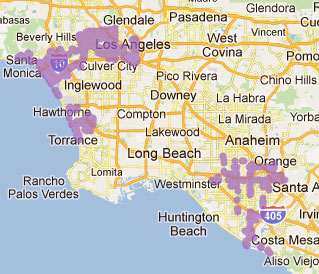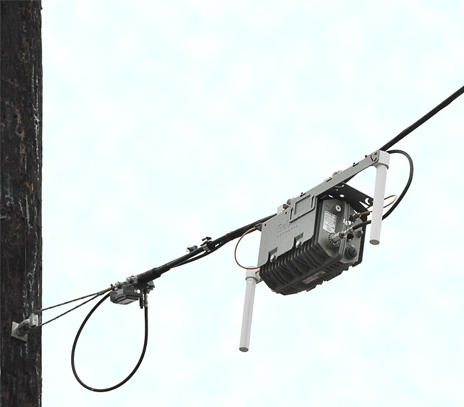From the relevant portions of a Sprint news release issued today:
OVERLAND PARK, Kan. (Business Wire), October 07, 2011 – At its 4G Strategy/Network Vision Update event today in New York, Sprint Nextel (NYSE: S) updated the financial community on its plans to accelerate deployment of Network Vision and its plans to roll out 4G LTE on its licensed spectrum. Network Vision, originally announced in December 2010, is Sprint’s plan to consolidate multiple network technologies into one seamless network with the goal of increasing efficiency and enhancing network coverage, call quality and data speeds for customers across the United States.
Dan Hesse, Sprint CEO, said, “Our progress deploying Network Vision enables Sprint to extend and evolve our 4G leadership and to improve the experience for 3G customers. Our next-generation network and cutting-edge device lineup, combined with the industry’s best pricing plans, give Sprint customers the best experience in wireless.”
Sprint will begin a rapid national rollout of LTE on its 1900MHz spectrum. Sprint plans to launch 4G LTE on its 1900MHz spectrum by midyear 2012 and complete the network build-out by the end of 2013. By the conclusion of 2013, Sprint’s 4G coverage footprint is expected to cover more than 250 million people.
Sprint expects to launch CDMA-LTE devices by mid-2012, with approximately 15 devices coming throughout the year – including handsets, tablets and data cards. Additionally, CDMA-WiMAX 4G devices, like the award-winning HTC EVOTM 4G, Samsung EpicTM 4G Touch and Nexus STM 4G, will continue to be sold throughout 2012.
What was missing from the press release?
Any mention of Clearwire.
Clearwire was positioned for years to be Sprint’s 4G service provider. Sprint owns more than 50% of Clearwire, but only at arm’s-length.
Now it looks like Sprint has all but abandoned Clearwire to allow that firm to sink or swim on its own. Sprint has effectively turned into one of Clearwire’s biggest competitors.
 Adding insult to injury, Sprint recently inked a deal with LightSquared to allow that firm to come on to Sprint’s Network Vision platform as yet another 4G LTE provider. LightSquared will also be a direct competitor to Clearwire via its retail outlets, which will in turn compete with Sprint. If you’re confused, don’t worry: some of these deals don’t make sense, but hey, it’s wireless…
Adding insult to injury, Sprint recently inked a deal with LightSquared to allow that firm to come on to Sprint’s Network Vision platform as yet another 4G LTE provider. LightSquared will also be a direct competitor to Clearwire via its retail outlets, which will in turn compete with Sprint. If you’re confused, don’t worry: some of these deals don’t make sense, but hey, it’s wireless…
It’s been a tough time for Clearwire, and the times are only getting tougher.
My own experiences with Clearwire, if any indication, do not bode well for the chances for that provider. Last May I signed up for its business class wireless service, which includes a static IP address (required to run web servers, mail servers, etc.). When the equipment arrived, I was told that Clearwire had run out of static IP addresses in the Los Angeles area. I ended up returning the equipment and cancelling the service. It’s really too bad since their over-the-air speeds were great, beating DSL hands down, and giving Time Warner’s cable modem a real run for the money (and Clearwire’s cost for business grade service is less than half the cost of TW’s Business grade service).
I’m hoping that Clearwire can keep swimming, but there are a lot of sharks in the water starting to circle.
Jonathan













